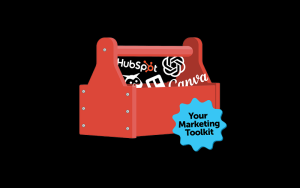There is a reason why print is still an important component of advertising campaigns. Actually there are a few. Studies show that print ads convert more sales, are more trustworthy, and are more memorable than digital ads. Plus print ads are relatively affordable, fast, and easy to track. People love the feeling of print in their hands. While screens have certainly become a staple in our lives, nothing quite compares to the tactile experience of a magazine, flyer, direct mail piece, or other print product.
Small businesses especially have realized big successes with print campaigns. Restaurants often send out direct mail coupons to increase their traffic, car dealerships bring people in for service specials and new cars with postcards, and health professionals send letters and direct mail with new customer calls to action. It’s because they work!
Tracking Print Advertising KPIs
We know print is effective. But how effective, you ask? How can you measure the key performance indicators (KPIs) specific to a print campaign? Let’s take a look at eight easy ways to track print advertising KPIs.
Related: Is Print Still Dead? Research Says No.
Start with a Strong Call To Action:
A call to action (CTA) is the most important thing to consider when you’re creating a print campaign that is designed to increase traffic, drive leads, and ultimately boost your sales. The call to action is just as critical as the delivery vehicle itself. Whether you tell consumers to call, stop in, or go online for a discount, a free product or service, or another enticement, this will ensure that you attract people with an offer that you can track.
Use a Coupon Code or Offer:
Once you’ve stated your CTA, you’ll need to include a code or offer that people can use to unlock their discount or deal. Keep it simple and memorable—and make it unique. You might offer a discounted price or free item if consumers use the code “Fall4Fall.” Many times retailers offer loss leaders to bring customers in the door; restaurants provide coupons to entice business, and service industries provide discount codes. Be strategic with these codes—you can build in location based information that can identify specific sources of business as well, such as a trade show or other event where the print product was distributed.
Include a Special Phone Number:
Create a phone number dedicated to a specific campaign so you can track all calls for that number. To set one up, you can use this guide.
Ask Directly:
Many times the easiest way to track the success of a print campaign is to ask customers directly how they heard about your business. You can do this over the phone, in person, online, via email or social media. A nice survey is also a great sendoff. People are usually happy to tell you how they found your business, and you can get an idea of how your print campaign is drawing people in.

Add a QR Code:
Quick response (QR) codes are a fast track to a website, no url typing required. They’ve become popular again in recent years as we’ve gone touch-free. Customers can scan a QR code and be taken to your landing page like magic! If this landing page can only be accessed by scanning the QR code, you have an accurate way to measure the effectiveness of your print material with the QR code.
Show a Digital Landing Page URL:
This is one of the most robust ways to collect data from a print campaign since you can have a form on the landing page that gathers whatever information you need, including name, number, email, and more. If you have “gated” content that you can share once you receive this information, you can provide them with a discount or other enticement and get a qualified lead in return. Additionally, any online conversions are simple to track through online analytics.
Build a Personalized Landing Page:
Going one step further than a general landing page, you can create a page that’s personalized for each prospect—a personalized landing page, or PURL. Personalization is a game changer, with higher response rates and stronger brand loyalty. Whether you’re using your prospect’s name, favorite products, birthday, age, or another demographic or psychographic variable to determine which offer to serve up, it’s helpful for customer and business alike since it gets to the heart of the customer’s needs. Personalization boosts ROI.
Related: How Personalized Print Products Bolster Your Marketing Efforts.
Watch the Lift in Web Analytics:
You can also track the website analytics during a print campaign to determine if there is a direct lift from the added exposure.
Now to the Fun Part! Calculating Print Advertising ROI
The results from the campaign can be plugged into this ROI formula, with the print advertising KPI of sales revenue increase:
Net Profit / Total Investment * 100 = ROI.
So if you run a print campaign costing $5,000 for a specific product over a period of three months and you see a $10,000 increase in sales revenue, the ROI would be:
10,000/5,000 = 2
2 x 100 = 200%
Print campaigns will vary in their ROI, depending upon the strength of the offer, how many times you send out the print piece, and how good your mailing list is. But with a well-crafted CTA, well-honed list, and at least a three time (or more) frequency campaign, you can achieve a good ROI.
Related: Print Advertising: A Multifaceted Approach for a Multiplied Impact.
Print that Performs
Need help with any of these elements? We are print people, and we’ve been partnering with businesses like yours for years to help them bring in more business with affordable, professional, and beautiful print campaigns. We’d be happy to work with you! Want to see the power of print? Give us a call today.




